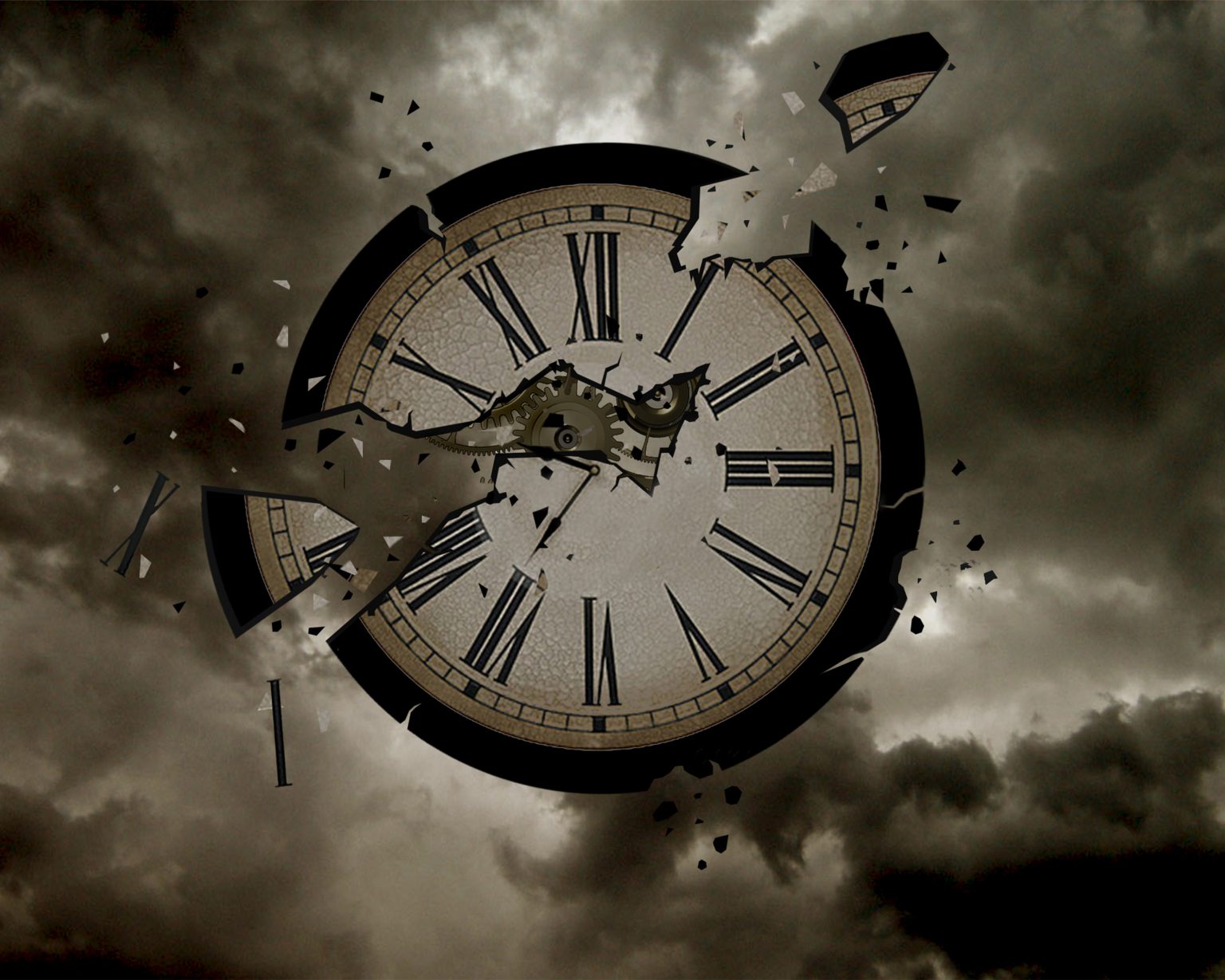Sarah Winchester was no stranger to mourning a loved one during her time. She suffered a series of painful losses that ultimately ended in her move to California, as a widow. During the Victorian and Edwardian Ages mourning was almost a way of life and came with certain traditions one would have to follow in order to do it properly. Some of these customs may seem strange today, but in the mid to late 1800s they were the routine.
1.The Hair Wreath
The hair of a departed loved one-or an entire family- was worked in amazingly intricate designs to create strangely beautiful pieces of art. These were also sometimes made from the hair of the living as family keepsakes.
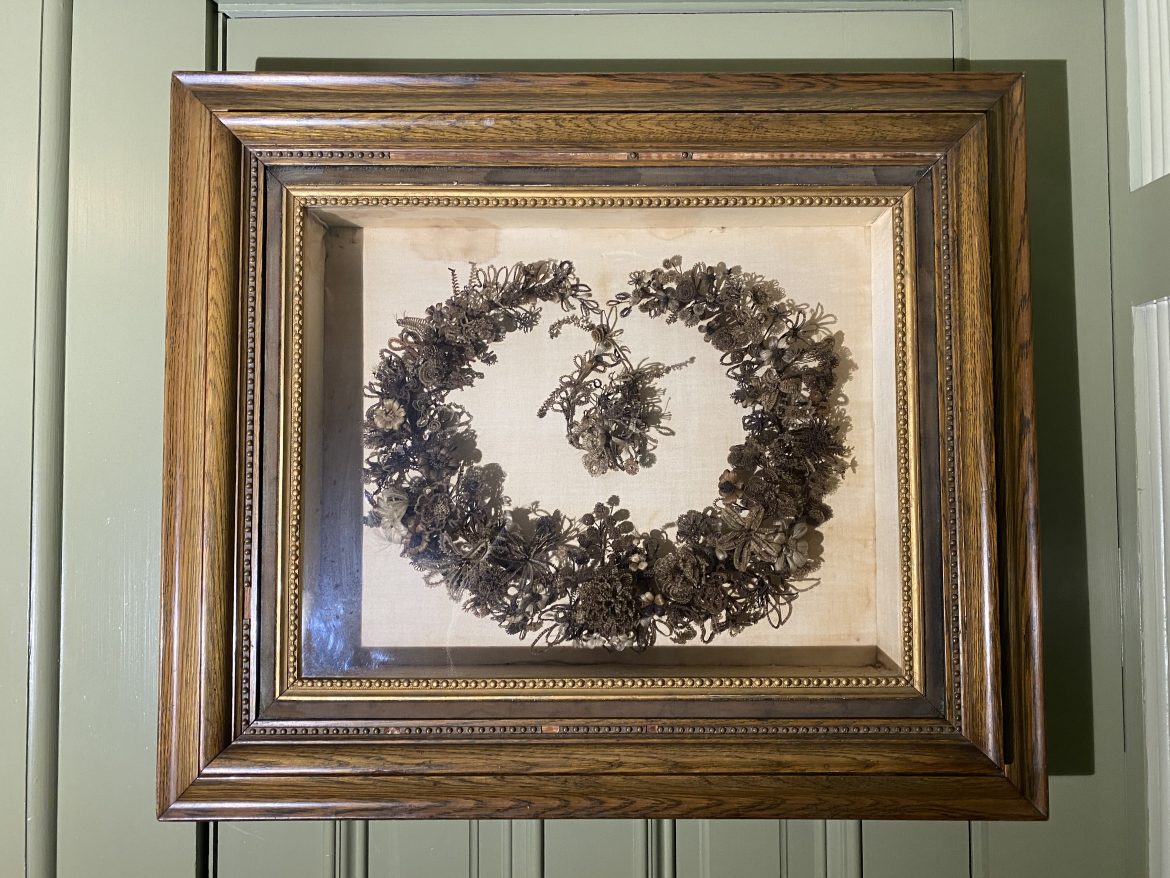
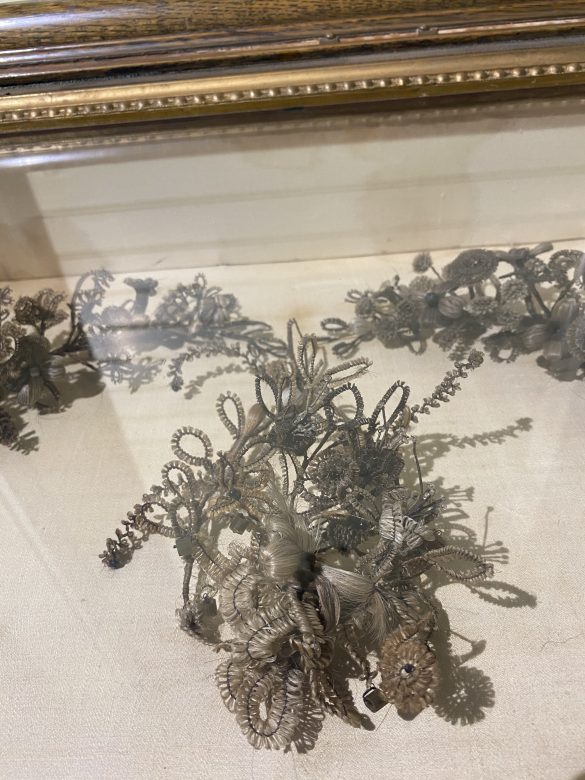

2.Spirit Photography
Americans were drawn to spirit photography to connect with the souls of the departed. You would sit before the photographer and the camera would find that the spirits of lost loved ones would appear in their portraits when they were developed. Mind you this was done in a time long before photoshop when photography was a new and mysterious wonder.
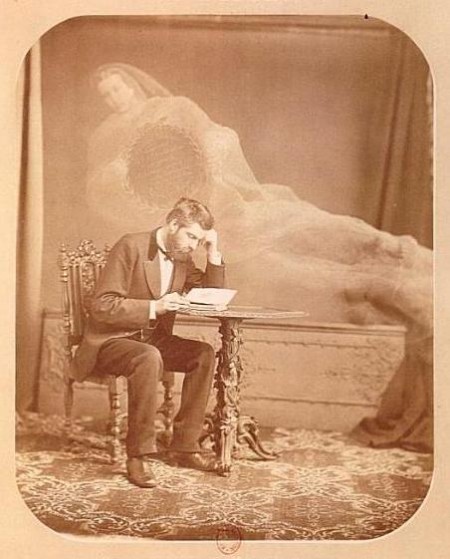

3.Mourning Clothes
While it is still customary to attend a funeral in black or dark garments in today, it was taken to a whole different level in Victorian times. Widows were expected to wear mourning clothes for a minimum of two years – one year in full mourning (dark clothes with little to no embellishments or trimmings), and one year in half-mourning (shades of deep purple & grey reintroduced in wardrobe).
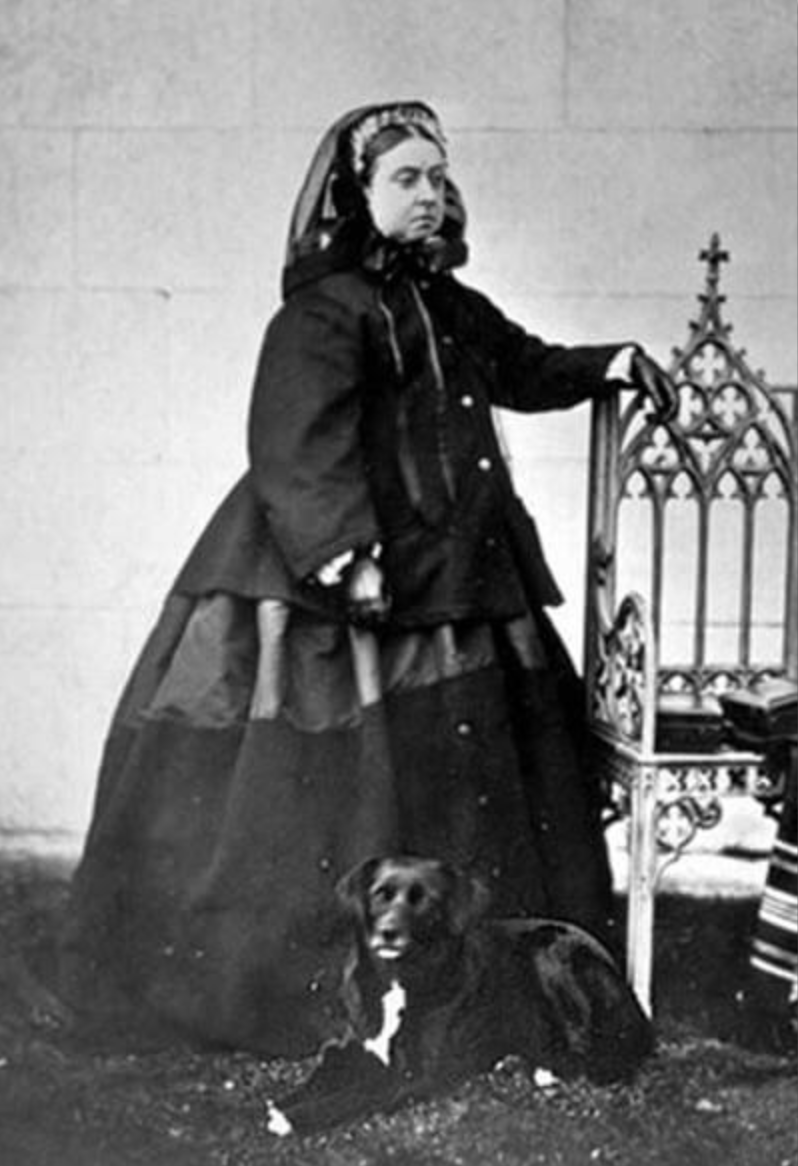
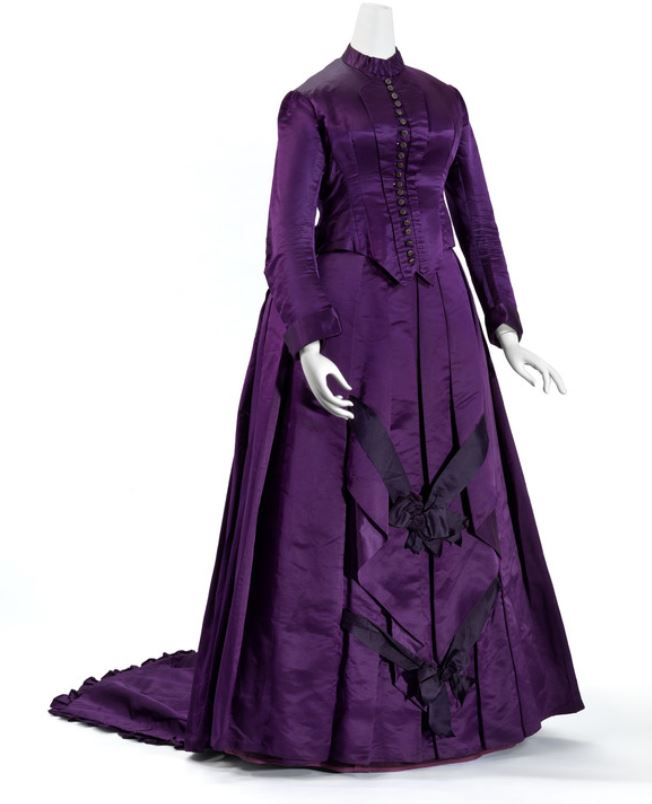
4.Stopping of The Clocks
While a bit of a superstitions custom, many individuals of the Victorian times participated in the tradition of the “Stopping of The Clocks.” After someone passed in the household all clocks within the home would have to be stopped to the exact hour and minute the deceased passed on. They believed this allowed that individual to safely continued on to their next phase. All clocks could be reset once the body was removed from the home, unless it was the head of the household that passed which would then mean all clocks had to be stopped in the home for the rest of time.
